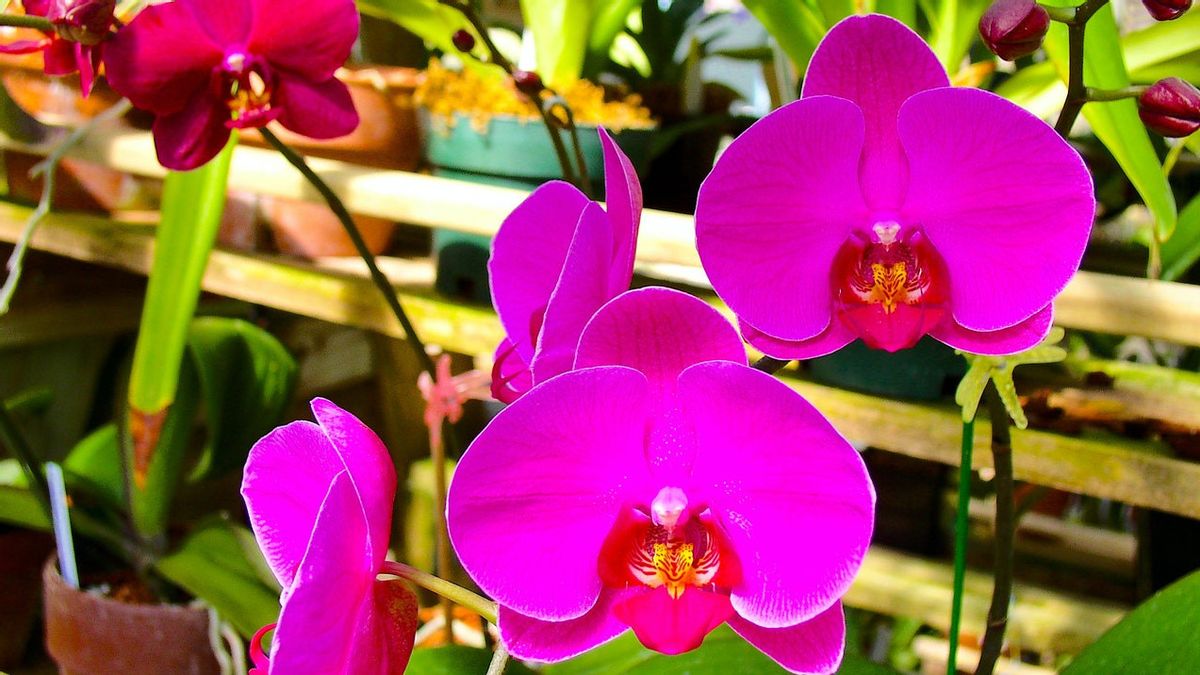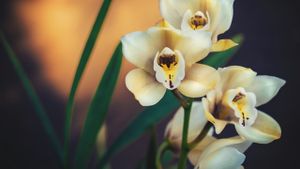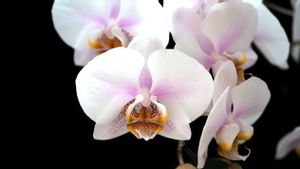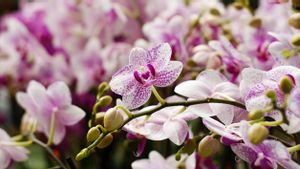JAKARTA – Orchid plants are known as the orchids family, where not all species are epiphytes or ride on other plants. There are also species of ground orchids that do not live with other plants. Although riding on other plants, orchids are not parasitic, you know. Like the moon orchid, which is native to the East Indies and Australia.
The moon orchid with the botanical name Phalaenopsis amabilis is often cultivated at home for decoration. The color of the flowers varies, from white, yellow, patterned red, and patterned yellow.
The lunar orchid subspecies usually lives wild in rain forest areas with high humidity, such as in Kalimantan, Sumatra and Java. There are also those that grow in Maluku and Seram but are included in the moluccana subspecies.
While in theory it may be quite complicated to care for moon orchids, but in practice it is quite easy. Like the tips below that can be practiced at home.
1. Proper watering
Some plant watchers recommend watering once a week, but that's not the point. Seeing each area has humidity conditions, sun exposure, and temperature then follow what the plants need.
Pay attention to the roots, if they are dark green and still fresh, it means they are still quite moist. You can also poke a stick to check how wet the roots are. If it is dry enough, then it's time to provide water intake by watering.

2. Avoid direct sunlight
Moon orchids do need a lot of light, but do not like direct sunlight because it can burn these plants. The color of the leaves can tell the condition, if the color is fresh green and sturdy then it has enough light. Meanwhile, if the color of the leaves is dark green, it requires more light. Well, if it's a soft yellow color or you find black burns on the edges of the leaves, this means too much sun exposure.
3. Watering technique must be right
One thing to avoid, do not pour water on the crown or the top of the plant where new leaves are growing. If watering, tilt the plant and add water slowly. Or you can submerge most of the pot in water and let it sit for 15-20 minutes before removing it.
SEE ALSO:
4. Check the plant roots regularly
Orchid plants are very susceptible to root rot, apart from being damp, root rot can be caused by viral or bacterial infections. The best way to prevent this problem is to cut off the rotten part as soon as possible and treat the wound with a mild fungicide such as cinnamon.
5. Put it in a cool open place
Orchids do not like to live in closed places with stagnant air. This plant likes the cool open air so it needs to move the right place. If placed indoors, direct the fan so that the orchid plants get a little fresh air.
If the orchid plant is happy, it will flower diligently. Do not forget to periodically give fertilizer to help the flowering process. After flowering, and the flowers begin to dry, prune the flower stems so that they are ready for the flowering process again.
The English, Chinese, Japanese, Arabic, and French versions are automatically generated by the AI. So there may still be inaccuracies in translating, please always see Indonesian as our main language. (system supported by DigitalSiber.id)


















